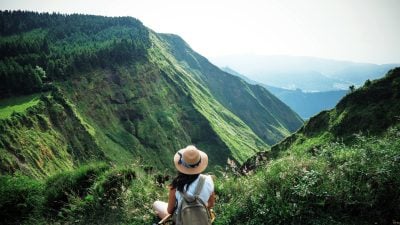Home / UK & Europe / Montenegro / Consider a Montenegro Vacation…
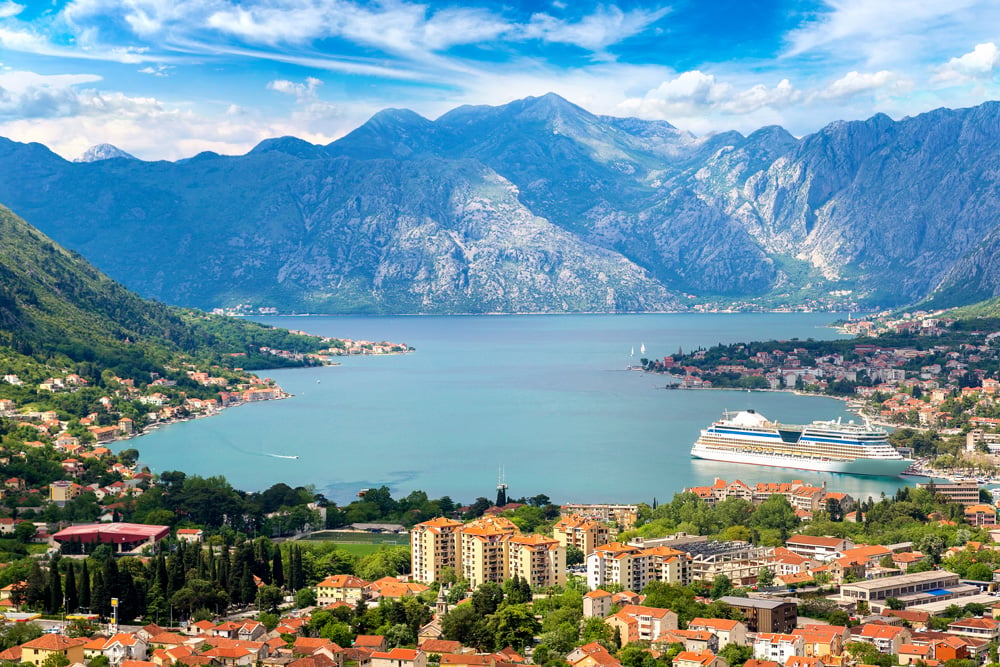
Consider a Montenegro Vacation, an Up-and-Coming Destination in Europe
Although perhaps not as well-known as its next-door neighbour, Croatia, a Montenegro vacation is emerging as Europe‘s next must-do.
Montenegro’s attractions include an outstandingly beautiful coastline with a dramatic mountain backdrop, wonderful sandy secluded beaches, fascinating historical sites, and friendly people. It is a destination which is not overly expensive or commercialized. The coastline is less than 300 kilometres/ 180 miles long and is lined with ancient walled towns. When you want a change from your beach resort, you can head off the beaten track and check out rugged mountain terrain and small inland unspoilt towns and villages. Let’s look at the main sites and sights when on a Montenegro vacation.
Kotor
Kotor is not necessarily a beach resort, although there are two sandy beaches several kilometres/miles away from the centre. It is better known for its charm as a walled medieval city set beside the sea, with the background of two mountain peaks which rise steeply out of the sea to add to the flavour. It has been likened to Dubrovnik in Croatia and described as a place of breathtaking beauty. It has a long history going back to the days of ancient Greek civilization.

The old town, entered through the Sea Gate constructed in 1555, is lined with narrow cobblestone streets filled with cafes and arts and crafts shops. It also contains the Cathedral of Saint Tryphon, built in the era of ancient Rome, the 13th-century Church of St. Luke, the Prince’s Palace from the 17th century, and the Napoleon Theatre from the 19th century, all of which are part of the rich heritage of Kotor. There is one important museum, the Kotor Maritime Museum, in the old town. Kotor has a long maritime history which is reflected in the collection of models of old galley ships, sailing ships, navigational instruments, and portraits of famous sea captains. At night, it comes to life when the bars and clubs open up. For the energetic, you can walk up the mountainside via 1350 steps to St. John’s Fortress, where the views are truly spectacular. The Ladder of Kotor is a spectacular hiking trail which starts behind the old town and zigzags up the mountain over 72 switchbacks. It ends at a restaurant, perfect for a respite on your Montenegro vacation, before heading back down.
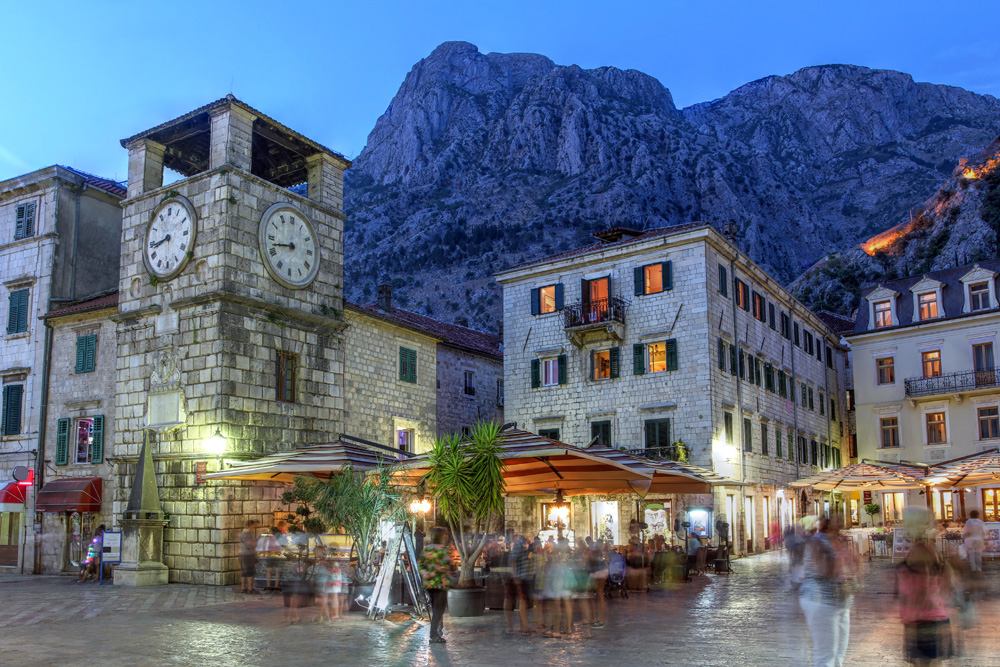
Lovcen National Park
A day trip to Lovcen National Park is a must if staying in Kotor. It is only 20 kilometres/12 miles away, reached via one of the most scenic drives in Montenegro, offering stunning views of the Bay of Kotor. The park is an important nature reserve for many of the country’s native bird species which include falcons and eagles, plus a number of bears and wolves which you are unlikely to see. Visit the exhibition centre in the middle of the park; take your children to the Adventure Park; view the Njegos Mausoleum, a very large complex built in honour of a Montenegrin prince-bishop and poet – there is an atrium and a crypt plus the 360 degree views from here are outstanding; go hiking on the many marked trails; visit the village of Dolovi with its old stone houses and try its prosciutto and cheese.

Budva
If it’s beaches you want on a Montenegro vacation, then Budva is one of the major players. Its gorgeous coastline is 21 kilometres/13 miles long containing 17 beaches, a wide range of accommodation, and excellent restaurants. The beaches themselves range from sandy to pebbly, and each one has its own unique character. Budva even has its own island called Sveti Nikola directly opposite the city, reached by ferry with beautiful beaches.
Beaches are not all that Budva has to offer. Apart from its natural beauty and beaches, it is rich in historic monuments. There is an old town rich in culture with high ramparts, narrow streets, squares, interesting buildings including several old churches, and a Roman necropolis. It also contains many shops, cafes, restaurants, and galleries. There is an open-air stage called Theatre City where concerts and literary evenings are held. In the very centre of the old town is the Ethnographic Museum with exhibits of jewellery, ornaments, vases, and other artefacts from various cultures including Illyrian, Greek, Roman, Byzantine, Slovenian, and others.
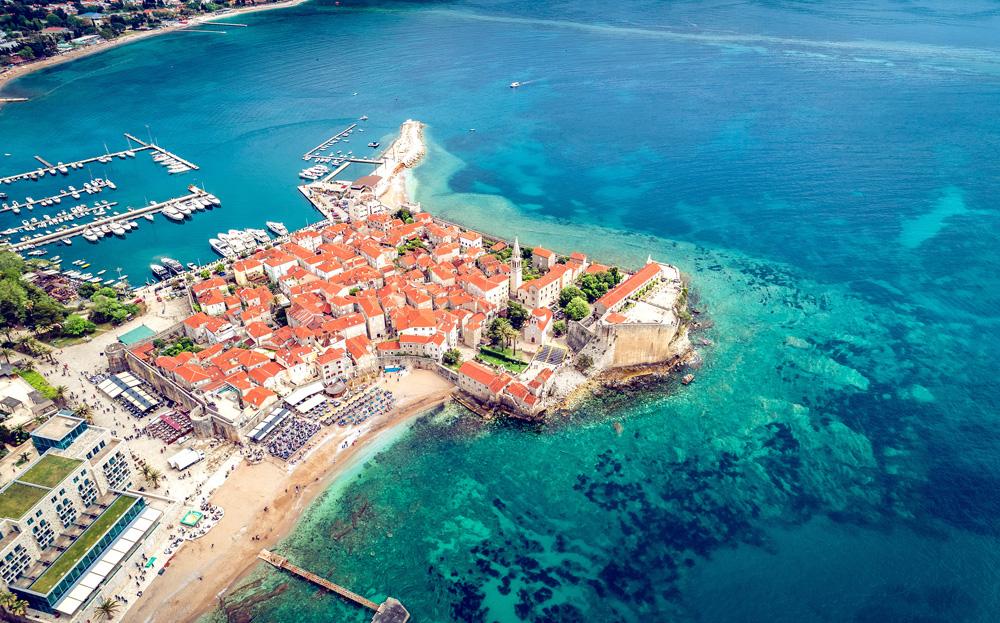
Sveti Stefan
Sveti Stefan, 6 kilometres/3.5 miles south-east of Budva is a unique resort which is owned by the Aman Sveti Stefan hotel, a 5-star establishment of the international chain, Aman Resorts under a 30-year lease from 2009. It used to be a fishing village with narrow streets, shops, and small churches, none of which has changed. It stands on the cliff of a rocky island connected to the mainland by a narrow causeway. Between the 1960s and the 1980s, it used to be a playground for the rich and famous. The island has a 2 kilometre/1.2 mile long coastline. One attraction is its red-roofed 15th-century stone houses and villas. To visit the island on a Montenegro vacation, there are two choices. One is to stay at the hotel and the other is to eat at the hotel’s restaurant. Otherwise, it can only be viewed from the mainland.
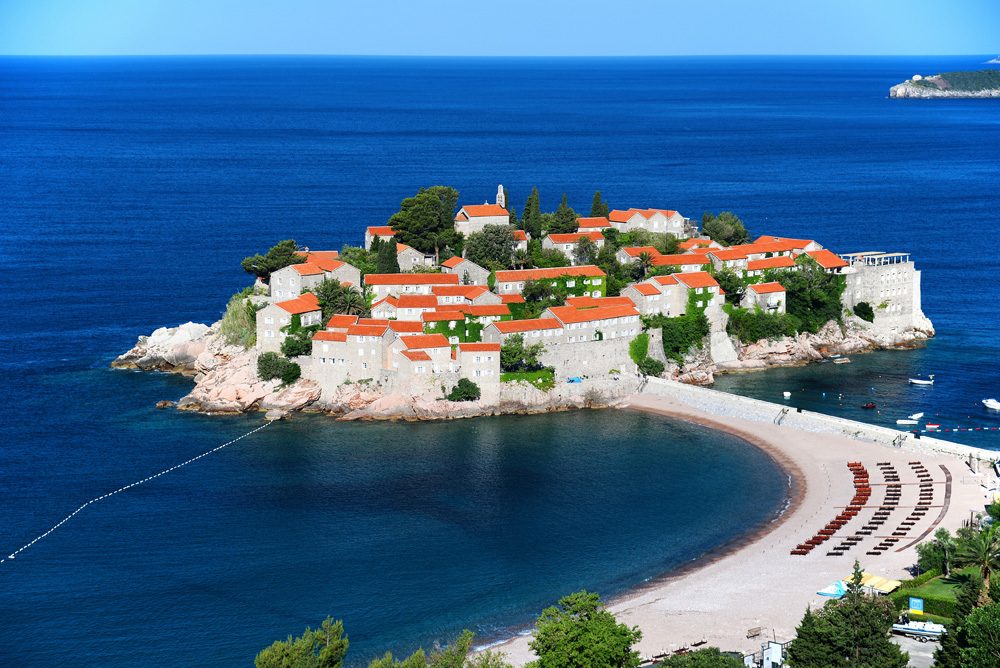
Herceg Novi
This is a fortified city close to Kotor. It has been described as a good alternative to the more crowded Dubrovnik because the cities have similar architecture. The old town is located on a steep hill and has a number of plazas and fortresses as well as churches. The main square in the old town has about a hundred small cafes with tables all serving good coffee and delicious cakes and ice creams. The Kanli Kula fortress dominating the old town doubles as an open-air theatre and is worth visiting mainly for the splendid views of the town. The Spanjola fortress located higher up dates back to the 16th century. Herceg Novi has good pebble beaches suitable for swimming.
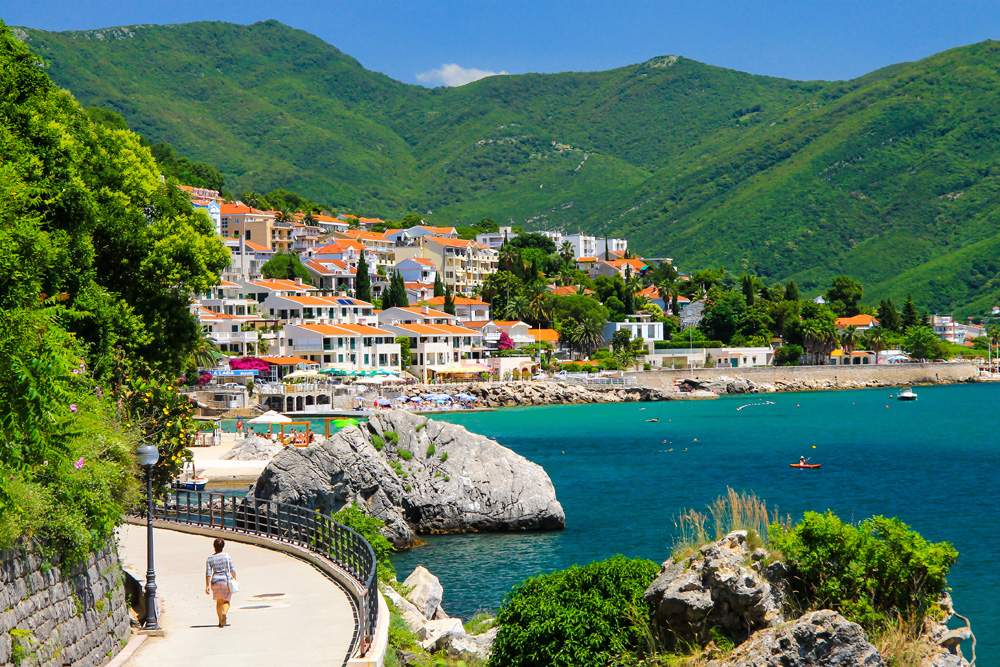
Perast
Perast is a small town on the Bay of Kotor, a short distance from Kotor. Although not very large, it has 16 churches and 17 former palaces. It is a place to visit for the day, on your Montenegro vacation, as there is not much to do there. However, the scenic aspects of Perast are outstanding. Close by are two man-made islands. One is Our Lady of the Rocks, which contains the Church of Our Lady of the Rocks and has a small museum attached to it. The church contains 68 paintings by a 17th-century artist from Perast plus paintings by Italian artists. Each year on July 22nd at sunset, there is an event/tradition when local residents take their boats and throw rocks into the sea, widening the surface of the island. The other island is St. George’s Island which contains a 12th-century monastery.

Ulcinj
Ulcinj is located just north of the border with Albania. It is one of the oldest settlements on the Adriatic coast founded in the 5th century BC. In the 15th century, it became part of the Republic of Venice, and in the 16th century, part of the Ottoman Empire. The town has a distinct Eastern flavour. Between May and September, it is a very popular tourist destination on trips to Montenegro, mainly because of its sandy beaches. Long Beach is aptly named as it is 12 kilometres/ 7 miles long and the longest beach on the Montenegrin coast. There are many other less known smaller beaches that are away from the main touristy areas. Ulcinj has also a large number of religious buildings including mosques and churches. Ulcinj’s old town is well preserved and has a castle left over from medieval times. There is a small museum containing Roman and Ottoman artefacts.

Ostrog Monastery
Ostrog Monastery is a unique building as it was carved out of stone and is positioned on the side of a mountain cliff. Situated between Podgorica, the inland capital of Montenegro and the coast, it is visited by more than a hundred thousand pilgrims from around the world and visitors of all religions every year. This makes it one of the three most visited Christian destinations in the world. The reason for this is believed to be that a small piece of Christ’s cross was given to the church when it was being built. The altar, therefore, became a place where a very important part of Christianity is displayed. However, the most treasured items here are the well-preserved frescos in a cave part of the monastery.
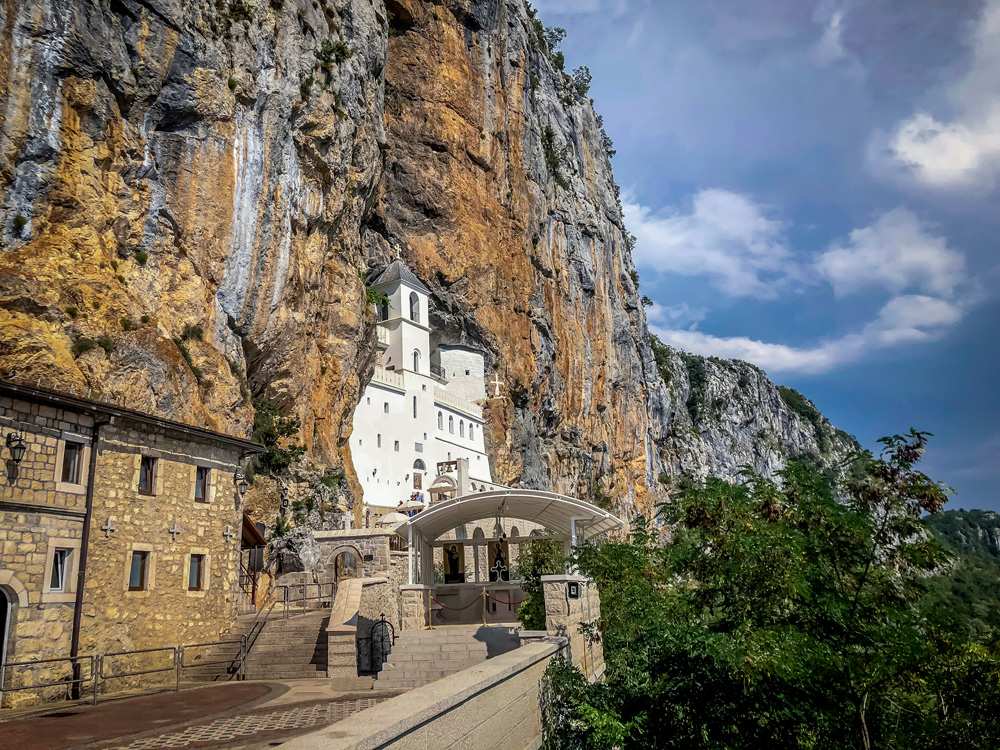
Durmitor National Park
This spectacular and breathtaking park is located in the mountains of the north-western part of Montenegro. It contains 23 mountain peaks, extensive forests, and deep gorges. Part of the park contains the Tara River Canton, 82 kilometres/51 miles long and the largest in Europe and second longest after the Grand Canyon. Durmitor National Park is home to over 1500 types of flora, over 300 species of animals, and 130 species of birds. There are 17 glacier lakes. I quote from a source, “the landscape looks alternatively like New Zealand, Scotland, Iceland and the Alps.” No wonder the Durmitor National Park is a designated UNESCO World Heritage Site. You can stay in the park as it is too far away from the coast to visit for a day.
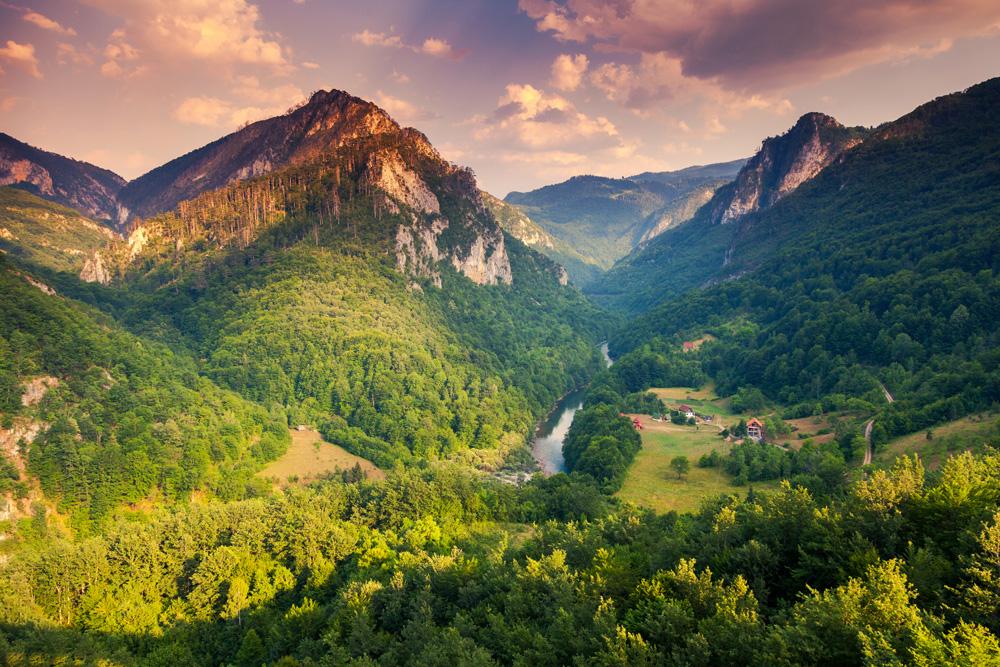
Get more travel inspiration by email.
Subscribe
0 Comments

Get the latest travel trends & hear about the best deals on vacations around the world.
If you’re a Globetrotter, these are the newsletters for you!


